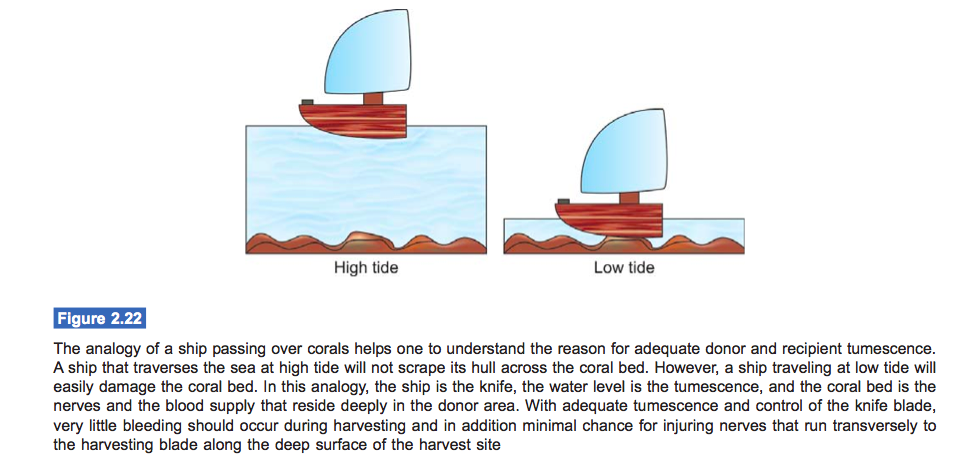The Role of Tumescence in Hair Restoration: A Ship at High Tide
All donor closures are not the same, nor is all donor hair harvesting. What is a prerequisite to good donor harvesting and closures is excellent tumescence. Tumescence refers to the injection of fluid under the skin the area for donor harvesting and closure prior to undertaking the harvesting. In this article, we will discuss how to use tumescence to achieve the safest and most superior donor harvesting and closure.
Many times the donor hair is considered an area of relative unimportance: the region for transplantation is all that matters. However, the donor area must be treated with the exact same level of respect and care as the transplant area for many reasons. First, a clean harvest allows the creation of clean grafts. If the donor harvest is done in a sloppy fashion, the grafts can be damaged and unusable for transplantation. We will discuss more in-depth how and why that is the case in a moment. Second, a bad donor harvesting can lead to unacceptable scarring afterward and compromise future harvesting in this area. Finally, postoperative discomfort and numbness can also be worsened with improper harvesting.

Figure reprinted with permission from Hair Transplant 360, Volume 1 (Jaypee Brothers Medical Publishers, 2011), Samuel M. Lam MD
How does tumescence work to help with a clean harvest and closure? I will use a simple analogy that I enjoy using as a teaching tool. Think of a ship floating effortlessly at high tide over the coral reef. The ship’s hull does not scrape or damage the corals below. However, picture that same ship riding at low tide over the coral reef: it can damage the reef as the hull scrapes across the bottom of the ocean. The ship is the harvesting blade and the coral is the deep nerve and blood supply to the back of the head. When fluid is injected aggressively to the point that the back of the head is taut and full, the harvesting can be undertaken so that only the hairs are harvested and nothing below is damaged or disturbed. This principle is so very important that I do not know why more physicians do not take the time to tumesce the area adequately for safe harvesting.
The other very important reason to tumesce the donor area is that it straightens and separates all of the hair follicles so that during harvesting the hairs are cleanly taken with minimal transection, which is inadvertent cutting and destroying of hairs that cannot be used for transplantation. Think of it this way: what if I harvest 5000 hairs but I destroy in the process 2000 hairs that will never be able to be used but just thrown in the trash? Is that acceptable? No, obviously. The tumescent solution AND a careful surgeon working slowly and meticulously during the harvesting help to reduce the transection rate below 5% at most. Besides saving hairs, the donor closure is also affected by a clean harvest. With almost no transected hairs embedded during donor closure, there should be minimal to no cysts, infection, or other problem spots in the healing phase. (Plus, I do clean the area before I close the incision to minimize further any issues of donor healing.) As mentioned before, if the nerve and blood supply are pristinely preserved then the donor area will heal much better leading to a better scar and also significantly less discomfort after a procedure.
Although this article takes one very small aspect of the hair transplant procedure and expands to a greater degree of depth to it, it shows how every step during a hair transplant is equally important to ensure success afterward.
T0 learn more about Dr Lam, please visit his hair transplant technique, or view hair transplant videos and hair transplant before and after photos, or call 972-312-8105 to schedule a consultation.




